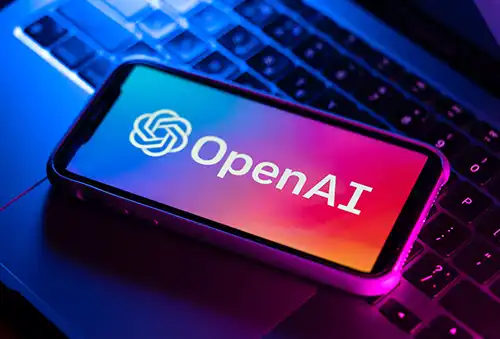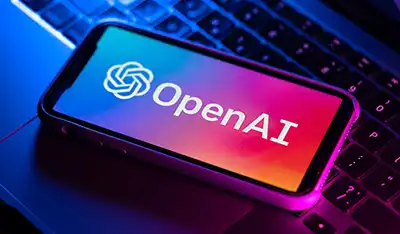
The history of ChatGPT is intricately connected to the remarkable advancements in artificial intelligence models pioneered by OpenAI. This journey began with significant improvements to language models leveraging the innovative Transformer architecture, a groundbreaking type of neural network. This architecture has dramatically transformed the field of natural language processing (NLP), enabling machines to understand, interpret, and generate human language with unprecedented accuracy and fluidity.
The Origin: GPT-1 (2018)
In 2018, OpenAI released the first model in the family, called GPT-1 (Generative Pre-trained Transformer 1). It had 117 million parameters and was trained with a large volume of texts from the internet. Its objective was to predict the next word in a sequence of text.
Although it was a significant advance in language generation, GPT-1 still had many limitations, such as difficulties in maintaining coherence in long conversations. Even so, it paved the way for larger and more sophisticated models.
The Advance with GPT-2 (2019)
GPT-2, released in 2019, brought significant improvements. It had 1.5 billion parameters, making it much more powerful than its predecessor. It could generate long, coherent texts, and its ability to complete sentences, create stories, and answer questions impressed the scientific and technological community.
OpenAI initially decided not to release GPT-2 to the public, as there were concerns that it could be used to spread misinformation or create misleading texts in an automated way. After months of testing, OpenAI realized that the risks were lower than expected and, in November 2019, it made the model publicly available.
GPT-3: The Great Leap in AI (2020)
The real breakthrough came in June 2020, when OpenAI released GPT-3. This model had 175 billion parameters, making it the largest AI language model ever created.
GPT-3 was able to perform a variety of tasks, such as:
- Answering questions more accurately
- Generating complex and well-structured texts
- Writing articles, stories, and poems
- Creating programming code
- Translating languages
- Simulating human dialogues
Its impressive capabilities caught the attention of developers and companies, who began using it in applications such as chatbots, customer support, writing assistants, and more.
The Birth of ChatGPT (2022)
Despite the success of GPT-3, there was still a problem: the model was not optimized for conversations. It could generate incredible texts, but it did not always maintain a fluid and natural interaction.
So, on November 30, 2022, OpenAI launched ChatGPT, a version specifically trained for interactive dialogues. It was made available to the public for free as an experiment.
The impact was huge:
- In just 5 days, ChatGPT reached 1 million users
- Companies began using it to improve customer service and task automation
- ChatGPT went viral on the internet, being used for learning, entertainment and work
Unlike previous models, ChatGPT was trained using reinforcement learning with human feedback (RLHF), which means that humans helped improve its responses, making them more accurate and useful.
ChatGPT Plus and GPT-4 (2023)
Due to the huge demand and the cost of operating the servers, OpenAI launched ChatGPT Plus in February 2023, a paid plan that offered benefits such as:
- Priority access, even during peak hours
- Faster responses
- Use of the new GPT-4 model
GPT-4, launched in March 2023, brought major improvements:
- Greater logical reasoning capacity
- Better understanding of context in long conversations
- More accuracy and less tendency to hallucinations (wrong answers)
- Ability to understand images (multimodality)
The free version of ChatGPT continued to use GPT-3.5, while ChatGPT Plus subscribers had access to GPT-4.
GPT-4 Turbo and New Tools (2024)
In November 2023, OpenAI released GPT-4 Turbo, an optimized version of GPT-4 that was faster, cheaper to operate, and had better performance.
In addition, ChatGPT received new features, including:
- Web browsing – Ability to search for up-to-date information on the internet
- File analysis – Upload and interpret documents, PDFs, and images
- DALL·E 3 – AI-powered image generation directly in ChatGPT
- Assistant Mode – Personalization to adapt responses to the user’s style
These improvements have made ChatGPT even more useful for a variety of industries, from education to business and technology.
The Future of ChatGPT and OpenAI
OpenAI continues to improve ChatGPT and explore the future of artificial general intelligence (AGI). Some potential innovations include:
- Even more interactive and human-like ChatGPT
- Improved integration with virtual assistants and IoT devices
- Better personalization capabilities and continuous learning from the user
- More advanced multimodal AI that understands voice, images, and even videos
ChatGPT has already revolutionized the way people interact with artificial intelligence, and its impact is only set to grow in the coming years.
That’s ChatGPT’s journey so far! What do you think is next?

